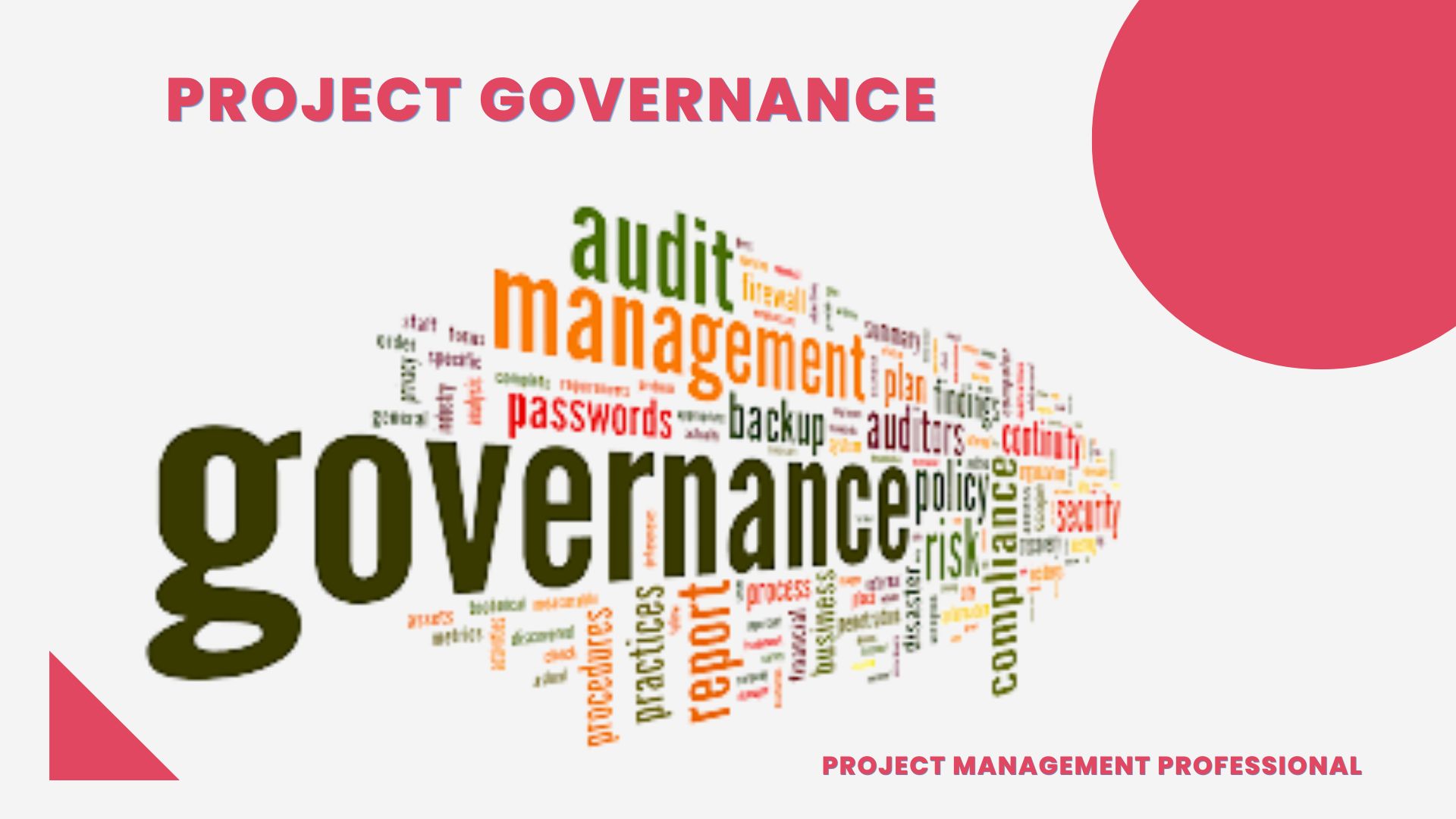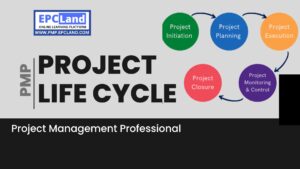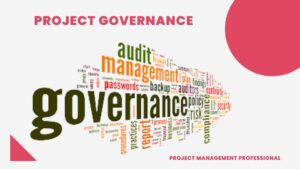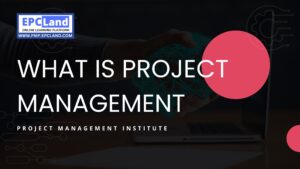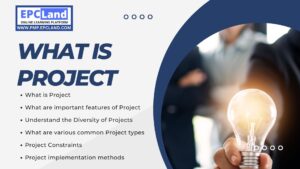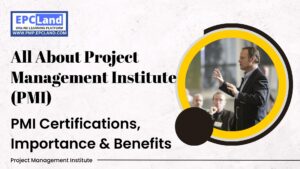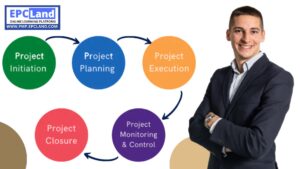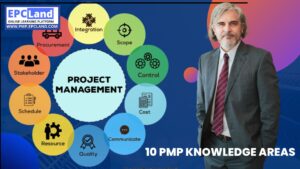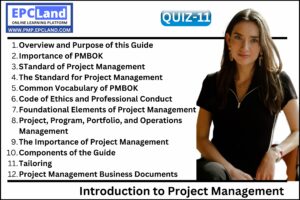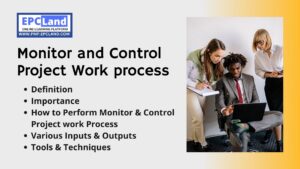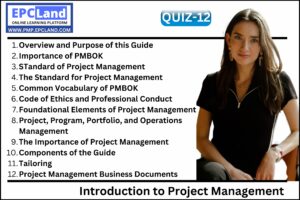Table of Contents
ToggleWhat is Project Governance
Project governance keeps projects running smoothly and on budget, meeting deadlines, and increasing customer satisfaction. To do this consistently, you need an overall framework to oversee the project. This is project governance. But what does it contain?
What comes with project governance
Project governance is a framework for making project decisions. It shows the activities performed by the organization and who is responsible for them. Therefore, Project Governance includes all aspects of:
- Policies
- Regulations
- Functions
- Processes
- Procedures
- Responsibilities
Attempt Quiz on Project Governance

Time's up
Three Pillars of Project Governance
Project Governance basically describes his three things:
structure
The organizational structure and environment must support the project. This means that senior management is willing to invest time and energy to create a vision that project managers can move forward with. The “structural” element of project Governance represents the entire company, not just the immediate project team.
Involve key stakeholders at all levels for an effective project management governance plan. This means taking their advice and suggestions into consideration. As her project manager, she is responsible for creating a plan that fits her vision and ensuring that everyone in the organization follows that plan of action.
people
Investing in a competent project manager is critical to any project. But first, senior management needs to understand current activity. This allows project managers to determine goals that all PMs should achieve. These goals should be clear, achievable and sustainable.
Remember that the goals you create must be clear and achievable. But how do you ensure that these goals are achievable? So you can access data from previous projects. Analyze what the goals of these projects were and how they were achieved. Was it easy to achieve, or did it require more training or resources to achieve? This analysis allows us to first create sustainable goals and then curate the right strategies to achieve them if necessary.
information
Understanding people is important, but process is even more important. No matter how many goals are set, whatever the vision, any project will fail without clear and consistent information sharing.
Seamless project management governance cannot be achieved until everyone on the team has real-time access to critical project information. Team members must be able to discuss and generate ideas about performing tasks. Obstacles must be removed to facilitate uninterrupted project execution. If they agree to meet soon and plan a course of action, the process becomes easier.
Don’t Miss the 1000+ MCQ questions & hundreds of quizzes on PMP Knowledge Areas and Various important sections.
Project governance role
Project governance has several roles, including:
Project Owner – This person is facing the front because it represents the company. Therefore, they are usually not project managers as they tend to hold the project manager accountable.
Key Stakeholders – A project committee composed of key stakeholders. They are either the people funding the project, the end product customer, or the supplier. Limit the number of key stakeholders to a maximum of six to keep the process efficient.
Advisory Groups – If you have many stakeholders, forming a larger advisory group can keep them involved in your project without complicating decision-making or creating inefficiencies. This is a forum rather than a project board.
Keep the project committee separate from your regular work. This keeps the project responsive and allows it to move forward without needing to approve every project decision from above. Project owners can make day-to-day decisions without everyone’s consent.
What is the project management governance model?
A project governance model is characterized by the interaction of three factors. Let’s take a look at these elements below.
Decision-making process
The project decision-making process accepts suggestions from people with different roles.
The people involved in the decision-making process are:
Steering Committee – The committee is responsible for the planning and strategy of operations from start to finish. It is also responsible for investment decisions, priorities, etc.
Board of Directors – Members of the board of directors oversee the activities and performance of the company. They meet regularly to discuss processes and represent the interests of shareholders.
Advisory Board – The Advisory Board is composed of industry experts who provide non-binding strategic advice to the company’s senior management.
Effective Standard Operating Procedures (SOPs)
SOP is a critical and important step in business operations. These operating procedures must be performed routinely and strictly adhered to. Following these steps will improve the overall performance and efficiency of your team members. These steps are:
- Formulation of an action plan
- Preparing a scope and risk management plan
- Facilitate communication between departments
- Facilitate stakeholder participation
3. Facilitate collaboration
Even the best project plan will fail without clear communication channels within the team. Team members need real-time communication and collaboration systems to develop, plan, discuss, and monitor tasks and activities.
So make sure you provide your team members with the right training and resources to execute projects that bring your business vision to life.
In short, Project governance model can be summarized
A governance model should complement your organization. For this reason, project managers should consider how strict they need to be. Overzealous project management can anger stakeholders. Conversely, too lax governance can risk lack of stakeholder engagement or false escalation.
Use scope, schedule, complexity, risk, stakeholders, and their importance to the project’s organization. This allows you to create a baseline that contains all the key elements required for project governance.
The project owner remains in control of the business case and budget. So the model looks like this:
1. Portfolio Board – Approves the release of funds
2. Project Board – approval of important documents
3. Project manager – Responsible for day-to-day decisions that do not affect the business case
And finally, there is the project team that executes the project according to the set vision. A strong and robust project governance model should maximize the success of the overall project framework.
Why is project governance critical to project success?
Establishing project governance is not an easy task. When starting a new project, you need to make a large investment. When investing in creating a project governance framework, the benefits are often difficult to quantify. The four main benefits of project management governance are:
- Single point of accountability.
- Outline roles, responsibilities, and relationships among project stakeholders.
- Problem management and resolution.
- Information dissemination and transparent communication.
Project governance provides centralized accountability. This requires clarity and promotes consistency in decision-making throughout the project lifecycle (Townsend, 2014). By appointing a central point of accountability, individuals can focus primarily on achieving project goals and not be deterred from the project in the long run. This doesn’t mean “choking”, but she’s the one in charge of the direction and focus of the project and having multiple people in charge doesn’t obscure it.
Project governance is important because:
- Facilitate data-driven decision making.
- It helps give direction to your strategy.
- Helps manage time, budget and scope.
- Eliminate redundant tasks and projects.
- This helps establish accountability for the work completed. This allows for appropriate stakeholder involvement.
- Helps maintain consistency in daily activities.
Additionally, project governance defines and articulates structured roles, responsibilities, and accountabilities within a project to facilitate decision-making. This is important when there are variances in project manager scope, budget, time, resources, or quality, or when risks arise. Project governance defines who these issues affect and how that impact is addressed.
A governance framework provides “direction” on how to address project issues. It not only defines who the problem affects, but also describes the mechanisms for dealing with the problem. Ensure issues are properly reviewed and who is the primary point of contact for handling and approving deviations to project requirements. Project governance provides direction and defines decision-making processes and metrics for validating project impact. It also enables project teams to meet requirements and creates a forum for timely issue resolution.
Finally, project governance provides a means to collect information and report to all stakeholders. This framework ensures that communication plans are properly defined, updated and executed. It also enables consistent, standardized, and transparent reporting. This facilitates nibble status updates on productivity to communicate and respond to stakeholder expectations.
Project governance Vs project management
Project Governance is often used synonymously with project management. But they are two different terms with two different meanings. Let’s figure out how.
Governance in project management means managing the project and its overall impact. Projects are analyzed across their lifecycle.
- Did the project align with business goals?
- Is there another strategy that should be repeated for future projects?
These are some of the things to consider as part of project governance. Project governance means managing, regulating, and influencing projects to achieve the best results.
Project management, on the other hand, involves managing the day-to-day activities of a project. Are there other tasks that need to be prioritized?
Are project dependencies clearly defined?
These are some of the things that project management needs to consider. Project management therefore means managing, monitoring and monitoring project tasks and activities in real time.
How to implement a project management governance model?
Here, we’ll look at how to implement a project governance structure with a few key factors in mind.
- Identify key stakeholders
Identify key stakeholders. Analyze project goals. Stakeholders play an important role in steering the project in the right direction. Once you have identified them, you should clearly define how often they will interact with you and how they will be involved in the day-to-day work of your project.
Note that stakeholders should not completely ignore ongoing progress or become overly involved in day-to-day activities.
- Prioritize your strategic goals
Then prioritize your strategic goals. What productivity standards do you want to set for your employees on a daily basis? How can you maximize your profit potential? How can you best allocate your resources across different projects? are some of the important goals that should be
- Create a solid project plan
Here comes one of the most important steps: creating a project plan. A project plan is the basis for project execution. Therefore, it should be comprehensive and well-defined. It provides an overview of priority tasks, dependencies, resource allocation, and more.
- Deploy the right tools
Now that you have a detailed project plan, it’s time to get the big picture with the right tools. A robust tool like ProProfs Project can streamline your activities and simplify project tracking.
- SELECTION OF COMMITTEE MEMBERS
Board members are senior staff with the ability to analyze trends and oversee projects. These people play a big role in providing feedback on how to improve project selection and execution. On-site analysis of work processes supports those involved in creating achievable goals and objectives.
- Promote an open organizational culture
Hierarchical structures rarely deliver effective results in today’s business world. Organizations around the world adopt open organizational cultures to accommodate suggestions from all levels of the organization.
This increases organizational efficiency and helps team members work toward their goals with ownership and ownership.
